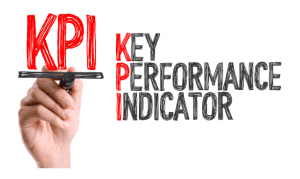KPI Full Form | What is Key Performance Indicator
What is the full form of KPI
KPI: Key Performance Indicator
KPI stands for Key Performance Indicator. It is a business metric, which is a measurable value that shows how effectively a company is progressing towards achieving its key business objectives and goals. There can be many KPIs used by companies to evaluate their success in achieving their goals.

In simple words, KPIs are a set of quantifiable measures that supports your organization's objectives and goals and allows you to put efforts in the right direction and monitor your progress over time. High-level KPIs generally monitors the overall performance of the business, while low-level KPIs focus on processes in departments such as sales, HR, support, marketing, etc.
KPIs vary between companies and organizations based on their objectives and performance criteria. For example, if a textile company's goal is to have the fastest growth in its industry, its main performance indicator may be the measure of revenue growth year over year (YOY). Similarly, for a retail shop, its sales' growth would be a key metric to measure growth.
For exampleTypes of KPIs:
- Process KPIs: It measures the efficiency or productivity of a business process, e.g., time taken to deliver an order. An order delivered in less time will show high performance.
- Input KPIs: It measures investment such as assets, resources, or money invested to generate business results. For example, money spent on employee's training, raw material, research, and development.
- Output KPIs: It measures the financial and nonfinancial outputs of business activities and processes such as the revenue generated, the number of new subscribers, the number of new admissions, etc.
- Leading KPIs: It measures the progress of the activities that may affect future performance. These indicators offer guidance on future results.
- Lagging KPIs: It measures the success or failure of an event, e.g., financial KPIs measure the output of the past activity. These indicators tell you how you have performed.
- Qualitative KPI: These indicators are subjective in nature. It is a descriptive characteristic, an opinion, a property, or a trait. E.g., a company conducts surveys to measure customer or employee satisfaction. /li>
- Quantitative KPI: It is a measurable characteristic that involves numbers. It measures a measurable characteristic through counting, adding, or averaging numbers such as number of sales, number of admissions, calls handled, etc.
- Qualitative KPI: These indicators are subjective in nature. It is a descriptive characteristic, an opinion, a property, or a trait. E.g., a company conducts surveys to measure customer or employee satisfaction. /li>
- Quantitative KPI: It is a measurable characteristic that involves numbers. It measures a measurable characteristic through counting, adding, or averaging numbers such as number of sales, number of admissions, calls handled, etc.
- Qualitative KPI: These indicators are subjective in nature. It is a descriptive characteristic, an opinion, a property, or a trait. E.g., a company conducts surveys to measure customer or employee satisfaction. /li>
- Quantitative KPI: It is a measurable characteristic that involves numbers. It measures a measurable characteristic through counting, adding, or averaging numbers such as number of sales, number of admissions, calls handled, etc.
Common Examples of KPIs:
- Market Share
- Customer Satisfaction Score
- Attrition rate
- Number of recruitments
- Manpower Cost
- Training Programs
- The average length of the service of employees
- Sales figures over a specified period